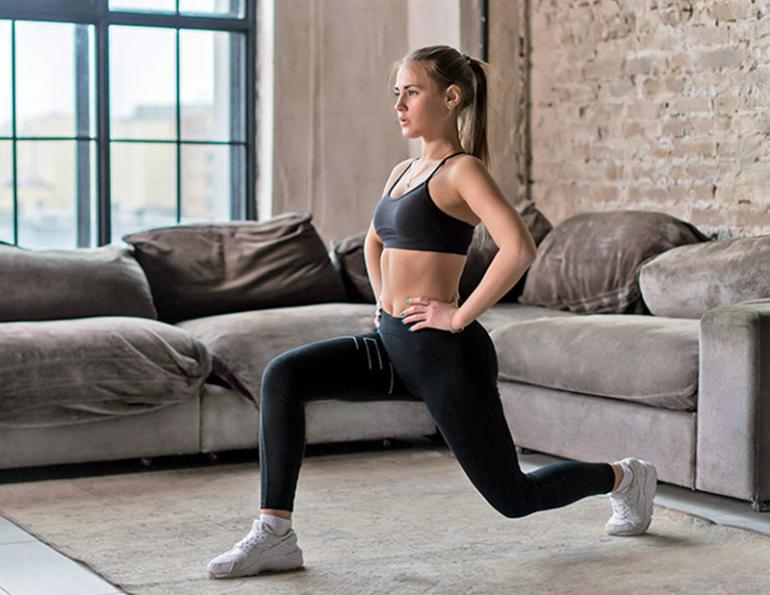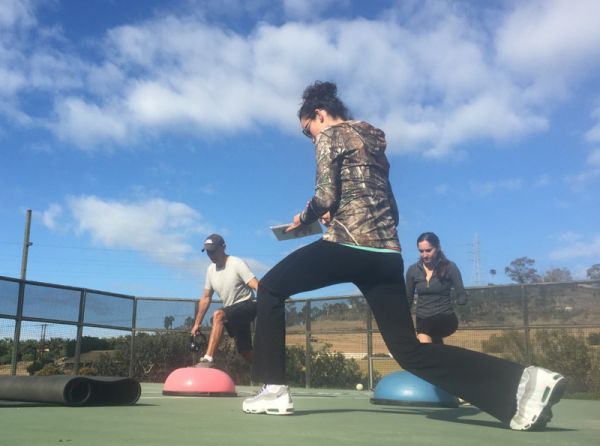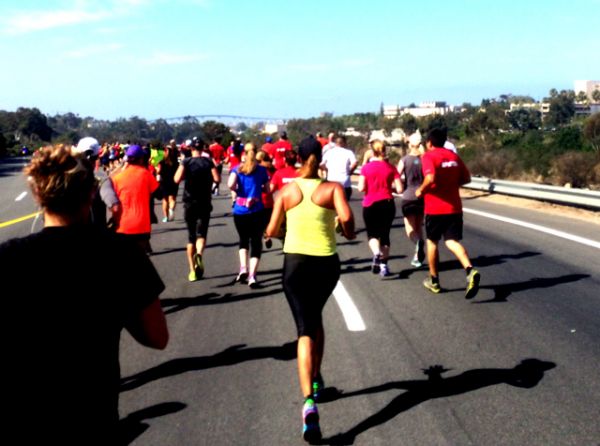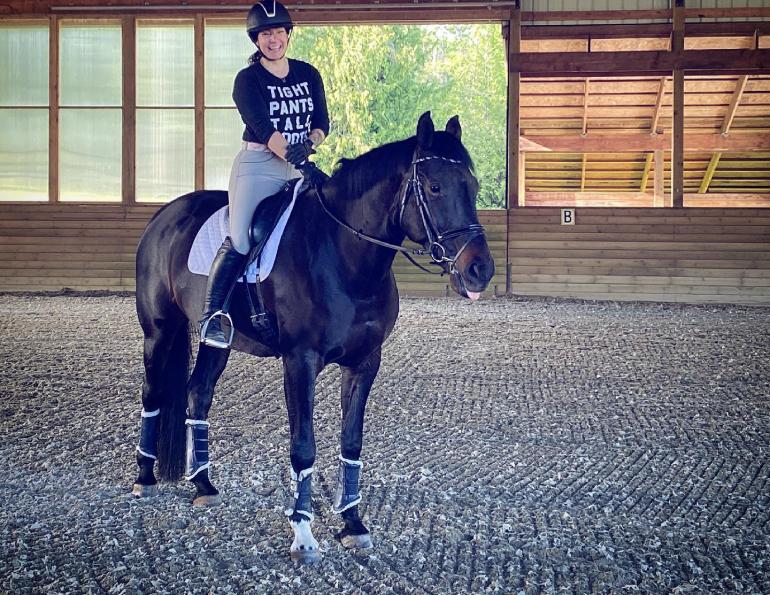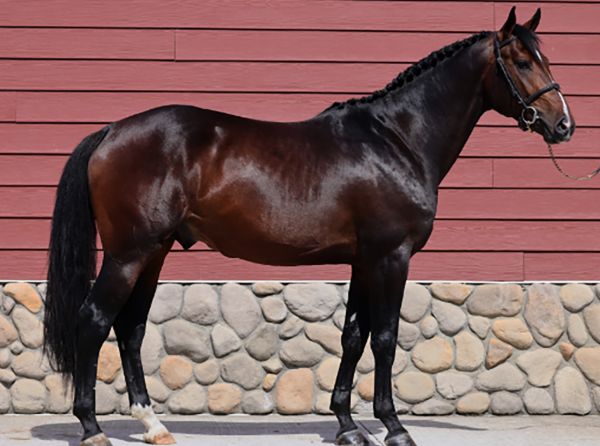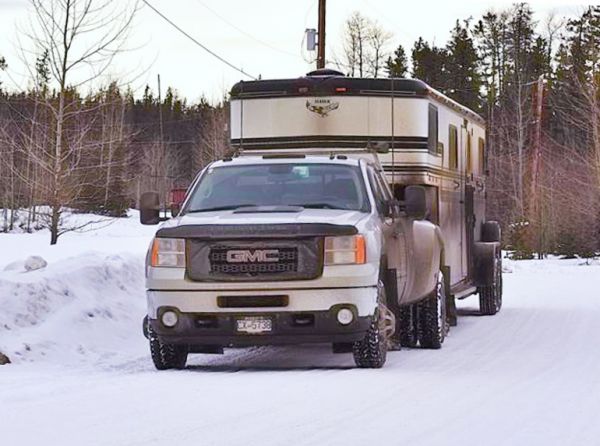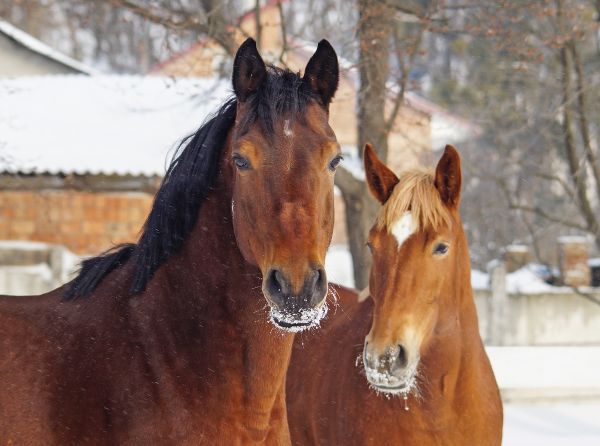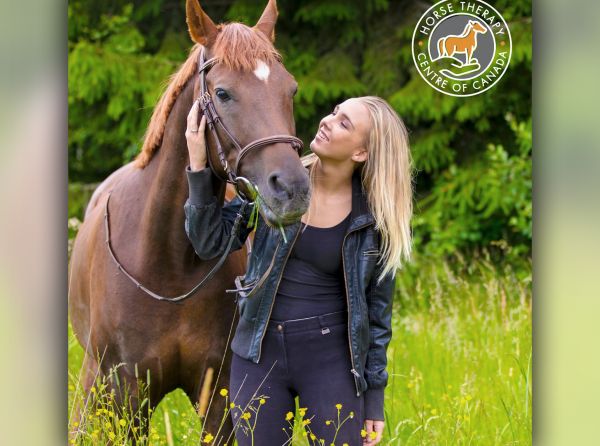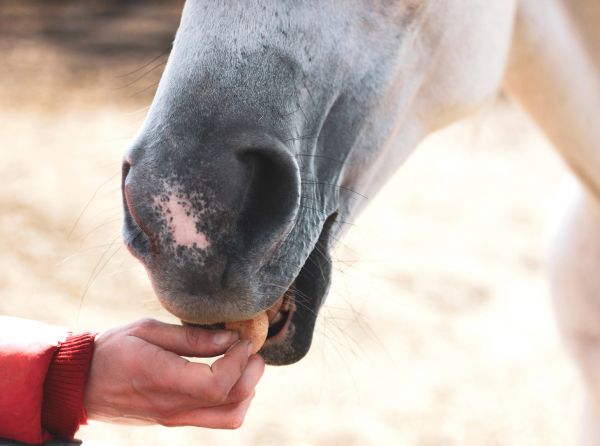By Bridget Braden-Olson
Pelvic stability is a problem for many riders, and typically gets worse over time rather than better. It can be fixed by riding with even seat bones which increases pelvic strength, but various factors can contribute to uneven seat bones or an unbalanced pelvis.
The main objective to increasing stability is to do it without enhancing any imbalances in a rider’s pelvic bowl. For the sake of this blog, we will assume there’s nothing major going on with the athlete like scoliosis or bursitis in the joints.
Do eight to ten lunges on each leg, with presses at the bottom. Hold the position and press both weights at the same time. You will have rocking or loss of balance and that is okay. The pelvis and legs are learning what they need to activate to correctively control stability. This can be done with or without a BOSU Ball.
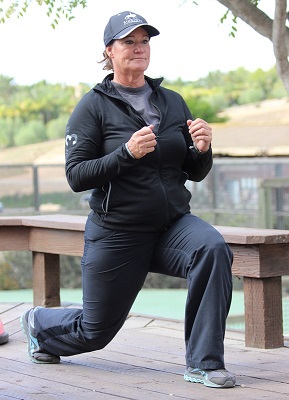
Training Tip #1: There should be space between your feet. It’s natural to want to lunge like you are on a single line, but think one foot on the rail and the other on a second track. Give yourself room to drop into a stable lunge, otherwise you’re going to tilt back and forth trying to find centre.
For beginner equestrian athletes, training the basic alignment of this forward lunge and press can be challenging. This should be done with eyes on the ground or in front of a mirror to check posture and to make sure that the knee stays behind the toe, protecting the patella.
Align the front femur (thigh bone) straight ahead to prevent the knee from rotating inward or outward. Drop the hips straight down to teach the hip flexors to function correctly, and make sure the back knee is bending but not hitting the floor.
Take a moment to assess how the hips feel and evaluate any restrictions you may feel as you lower into the lunge. When pressing the weights upward, notice any instability in your balance or shifting in the core. The press and the lunge are two separate movements, you should be able to do both without disturbing the other. If you are noticing that the lunge is difficult with the press, practice just the lunge.

Training Tip #2: Tight quadriceps will pull the body forward, changing the posture and possibly making issues for the knees. Instead of going all the way down in the lunge, go half-way down and pause. Doing this will increase the range of motion in the legs, allowing for a safe full lunge later on.
For the advanced equestrian athlete, increase the difficulty by challenging your stability by lunging onto a BOSU Ball. Watch the thigh alignment and make sure the foot/ankle is balanced on the BOSU. Trying not to rotate the foot as you lunge can be a struggle, again protect the knee and ensure that it’s always behind the toes.
On the BOSU, make sure that the hips do not rotate during the lunge. Think about the hands pressing straight up out of the shoulder and check to see if the hip bones are pointed forward, like headlights.



